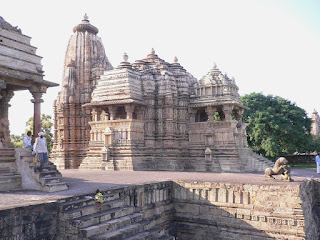 The structure of a Hindu temple is the same all over India but there may be certain additions to its basic form depending on the regional influence or the wealth of the temple and sometimes the political influence. For example the double images in the ‘garbha griha’ and the high protective wall in some South Indian temples were meant to protect against the Muslim invaders.
The structure of a Hindu temple is the same all over India but there may be certain additions to its basic form depending on the regional influence or the wealth of the temple and sometimes the political influence. For example the double images in the ‘garbha griha’ and the high protective wall in some South Indian temples were meant to protect against the Muslim invaders.Hindu worship is not congregational in the Christian sense, and is mainly personal except on certain occasions. The structure of the temple is therefore based on the principle of having a small garbha griha where the image of the deity is installed. There is a passage for circumambulation of the garbha griha. This is the heart of the temple and the dome or spire is normally above the garbha griha, except in South Indian temples where the spire is generally at the entrance circumambulation after prayers is very necessary and the passage around the idol is a essential part of the structure of the temple.
There is a small passage called the antrala (vestibule), which connects the garbha griha to the mandapa or the pillared hall where the devotees gather for worship. The pillars normally have carvings of minor gods and goddesses, incidents from the life of the main deity and sometimes scenes from the various epics.
In some temples these carvings cover the exterior walls of the temples. The entrance porch is called the Ardha Mandapa. In some of the larger temples there are sometimes extra halls called the Maha Mandapa and Kalyana Mandapa used for holding large prayer meetings.
No comments:
Post a Comment